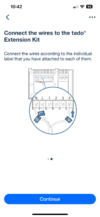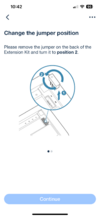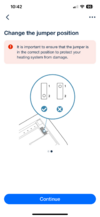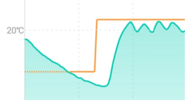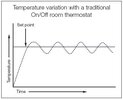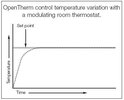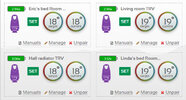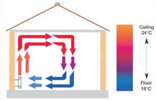I do see how there is a huge difference between modulating and non modulating boilers, same with heat pumps with on/off and inverter speed control. In the pre-modulation days thermostats used the mark/space ratio to stop over shoot, however this will cause many boilers to auto return to flat out setting and it messes up controlling how much to modulate a boiler. I had this problem with my mothers house, with a Worcester Bosch boiler which did modulate but had no way to interface with the modulation control.
I know my own boiler (oil) does not modulate, and looking at the graph from the Kasa TRV
View attachment 337387 one can see the result of on/off control. We have seen the two graphs for years,
View attachment 337388View attachment 337389 but actually seeing the report from the TRV makes one realise this is not theory but actually happens in practice.
However the question is with a modulating boiler, what does what? If one has a modulating boiler and no wall thermostat the TRV's can be set to maintain each room at the set temperature, I did this with my mothers house, the report from the TRV's
View attachment 337390 was used to set the lock shield valves, if the current exceeds the target close the TRV a tad, and of course the reverse. What I found was radiators did not get hot and cold, but some where between the two limits maintaining the room temperature as set. The TRV heads did not link to main thermostat.
But there is a problem, as summer arrives the boiler reaches a point where it can't turn down any more, so it starts to cycle, and although the anti-cycle software will reduce how often it cycles, unless some device turns off the boiler it would continue to cycle all summer.
So we need some thing so on warm days the boiler is turned off. So if we have a down stairs room (heat raises) which is normally kept at say 17ºC by the TRV, then if the room reaches 18ºC it must be a warm day so heating can turn off. That is of course as long as no alternative heating in the room.
However having tried to set that up, it's not quite that easy. My hall now is showing 18ºC at the TRV and 19.5ºC at the wall thermostat, this is due to heights and distance from radiator/door etc. So would need to have TRV at 17ºC and wall thermostat 18.5ºC or higher, it does work, did it with mothers house, but I was slowly adjusting the lock shield valves through the winter in the first year fitted for it to work nearly A1 in the second year.
Linked TRV's and ebus control makes the setting up so much easier. We see the diagrams
View attachment 337407 showing why the thermostat should be on the opposite wall in line with radiator to work and be at a height that is easy seen and adjusted, but really what we want is a hub collecting info from each TRV and using it to tell the boiler what to do. Also add some temperature sensor to the hub, so should signal between the TRV and hub be lost, it does not go daft.
But in the main heating is controlled by near enough engineering, my own home is no exception, I need to add a second thermostat to hold the boiler on if living room cool, but still need a thermostat in hall for when the open fire is used, or even the sun shines through the windows warming the room, as otherwise rest of house would cool down.
But also I look at cost, spending £500 on controls is not going to save £500 in first year, likely only £50 saving, so 10 years pay back time. That would make me 83, and question is at 83 will I still live in this home?


